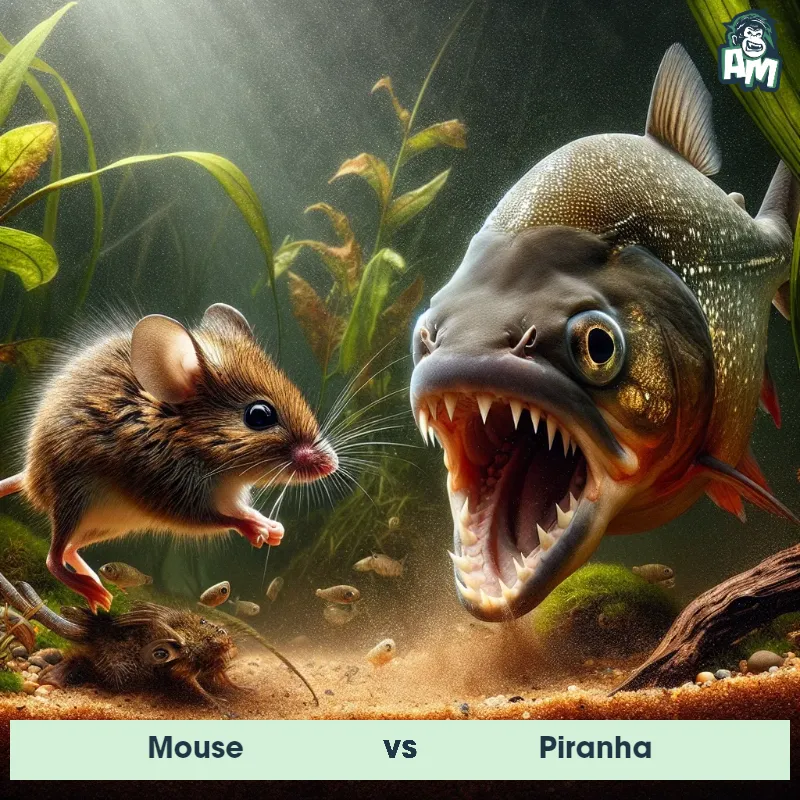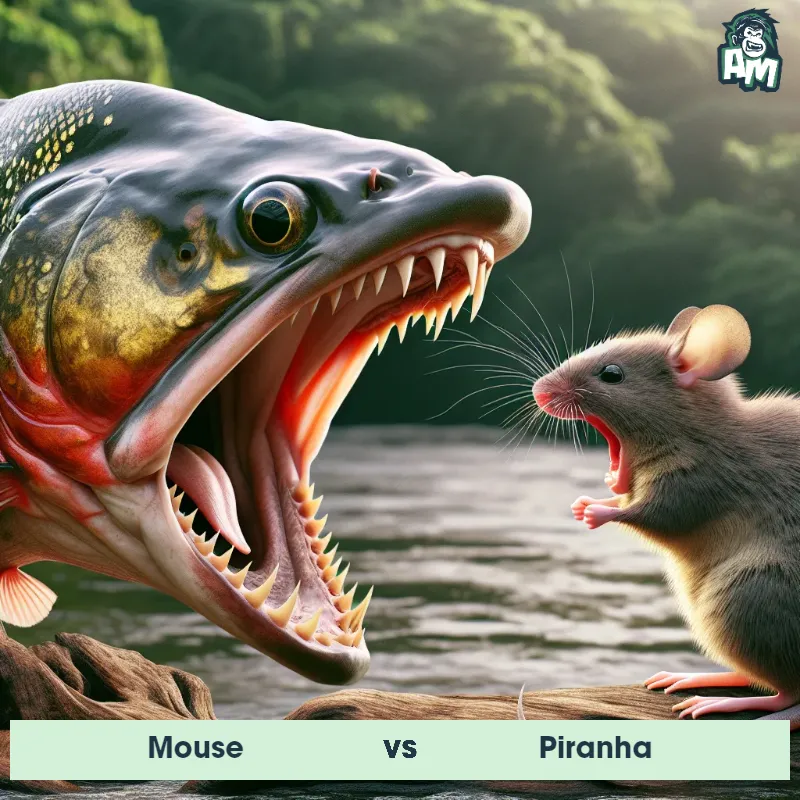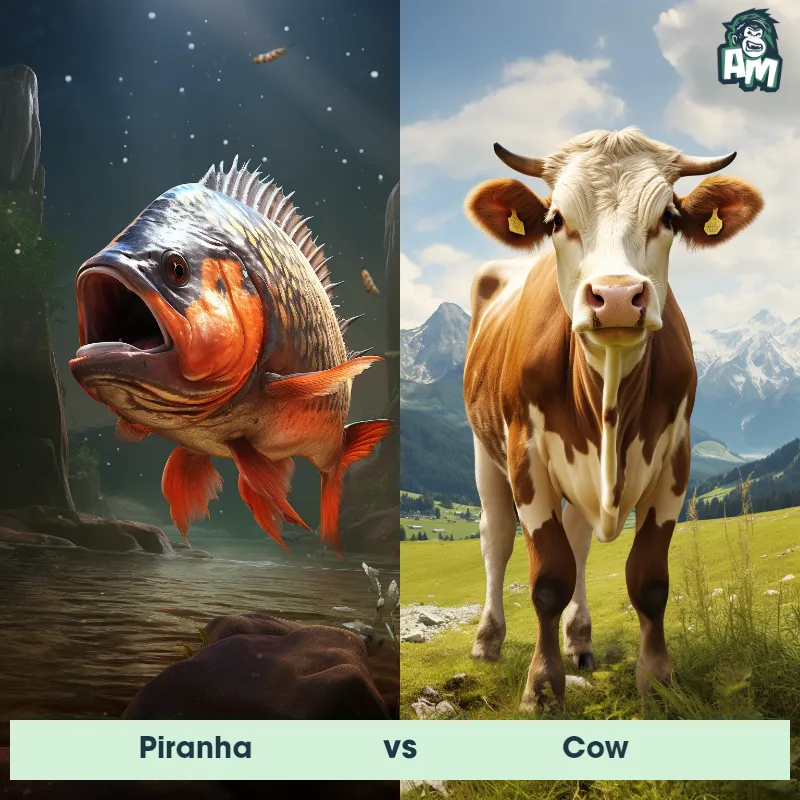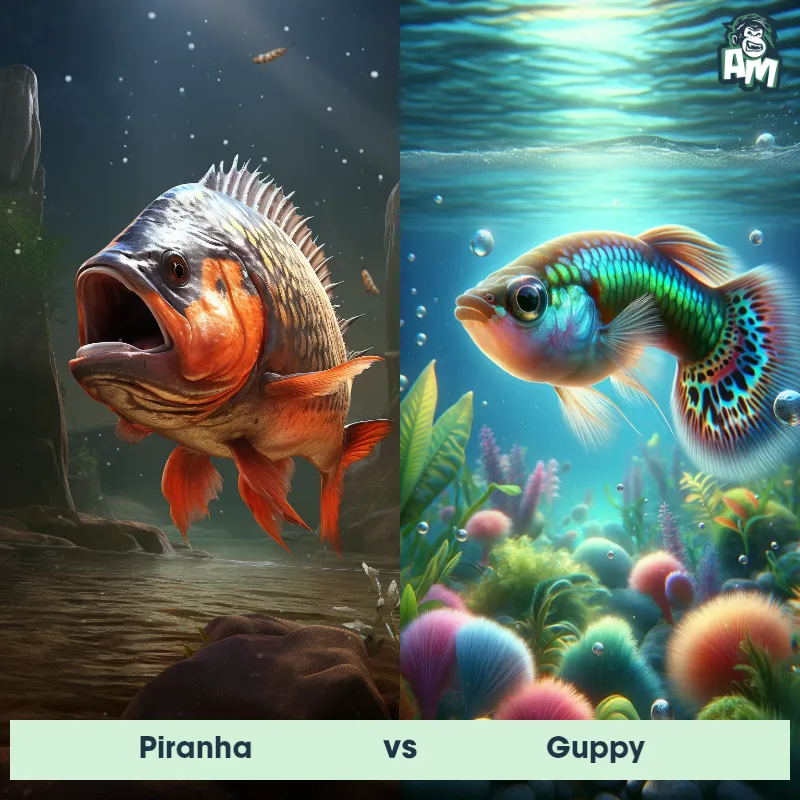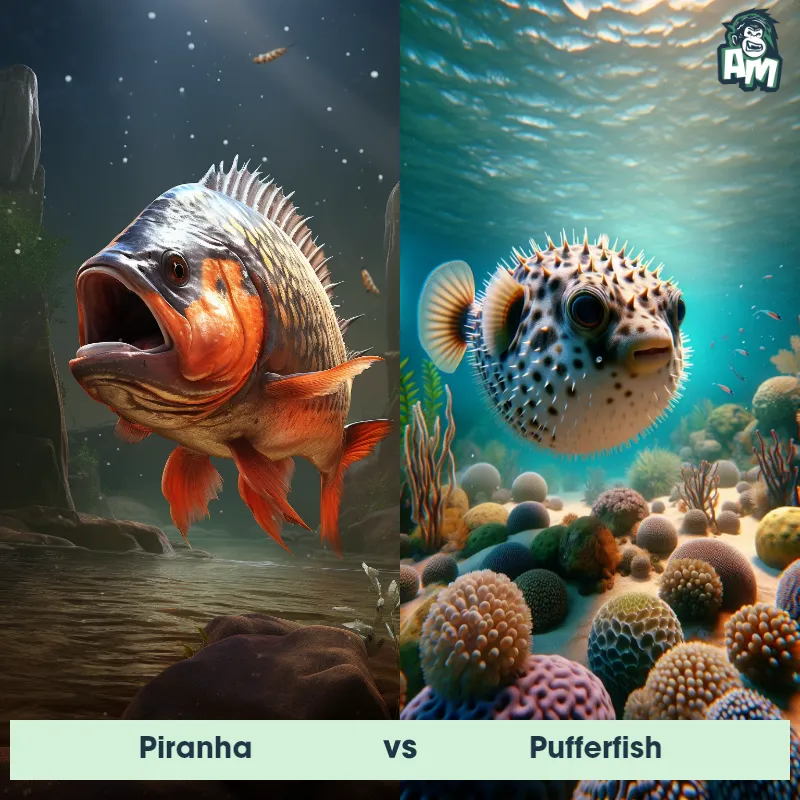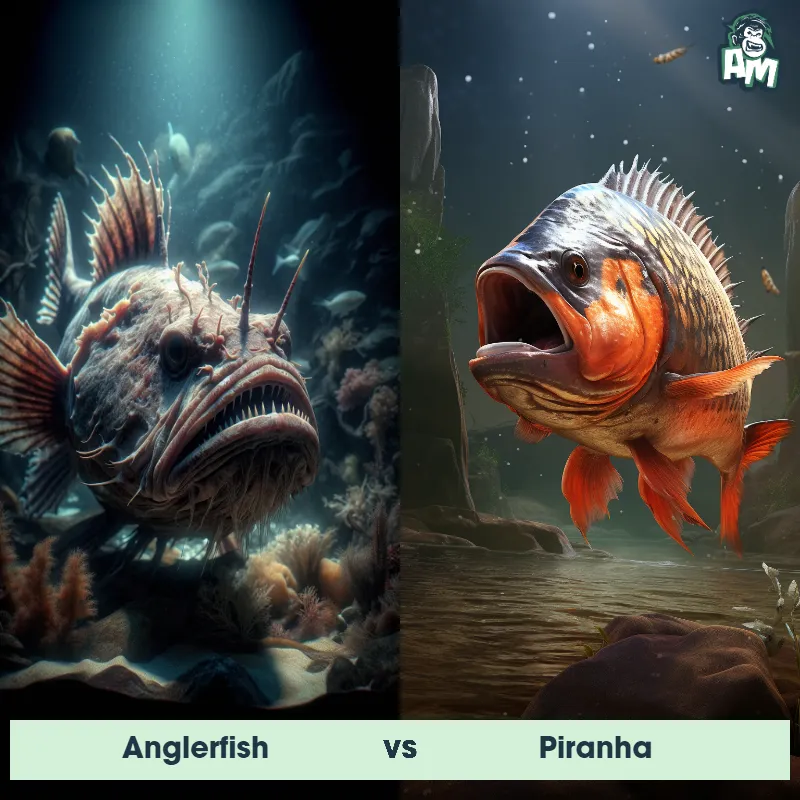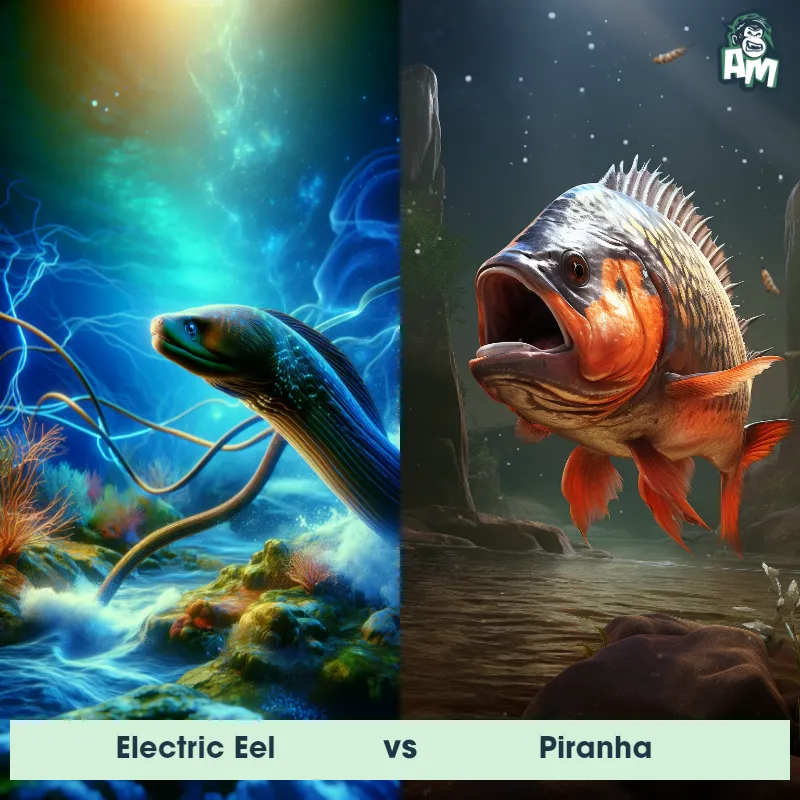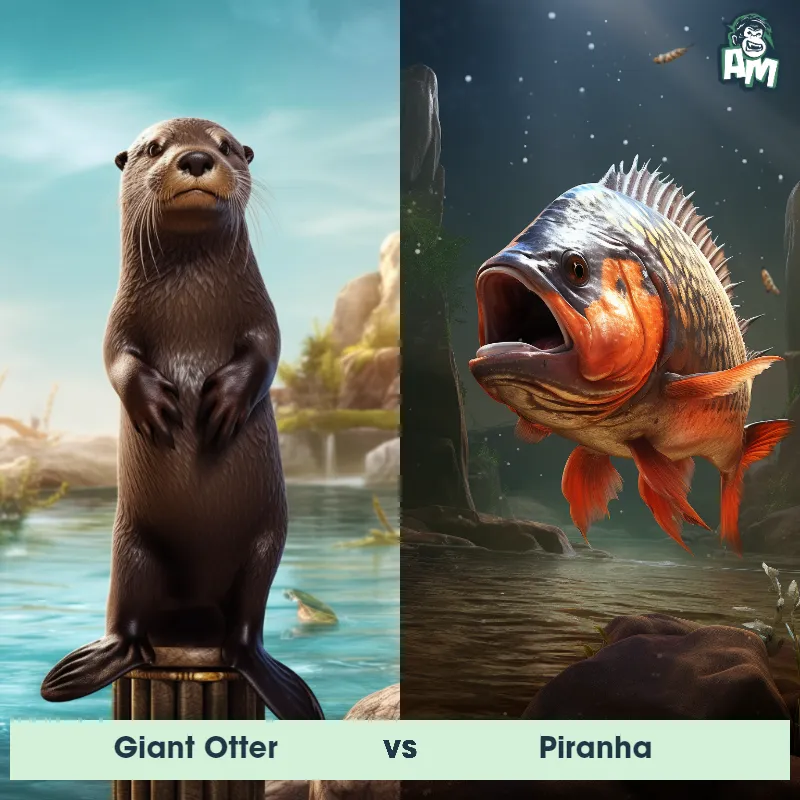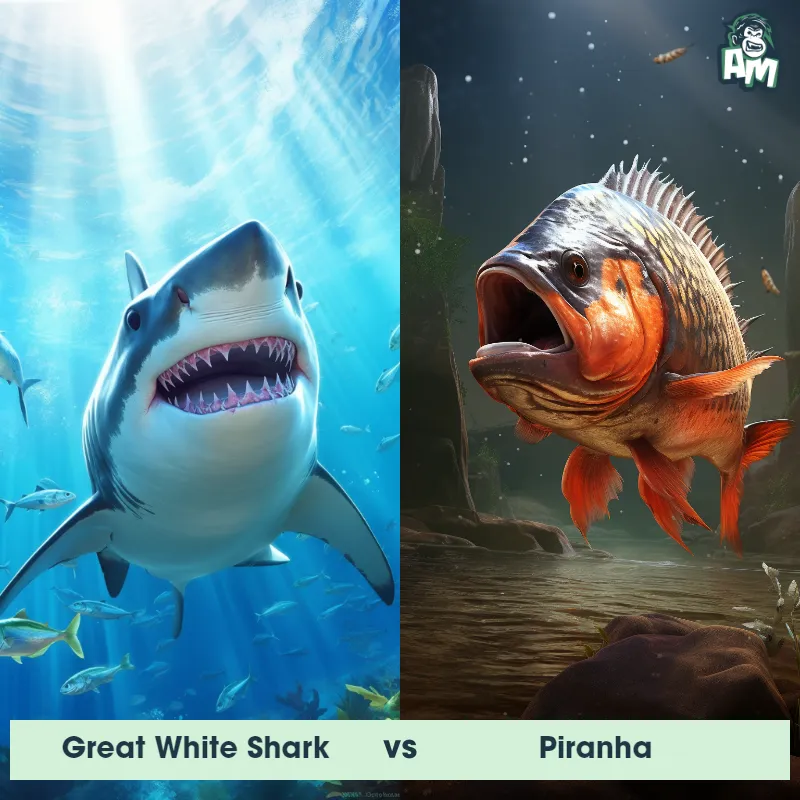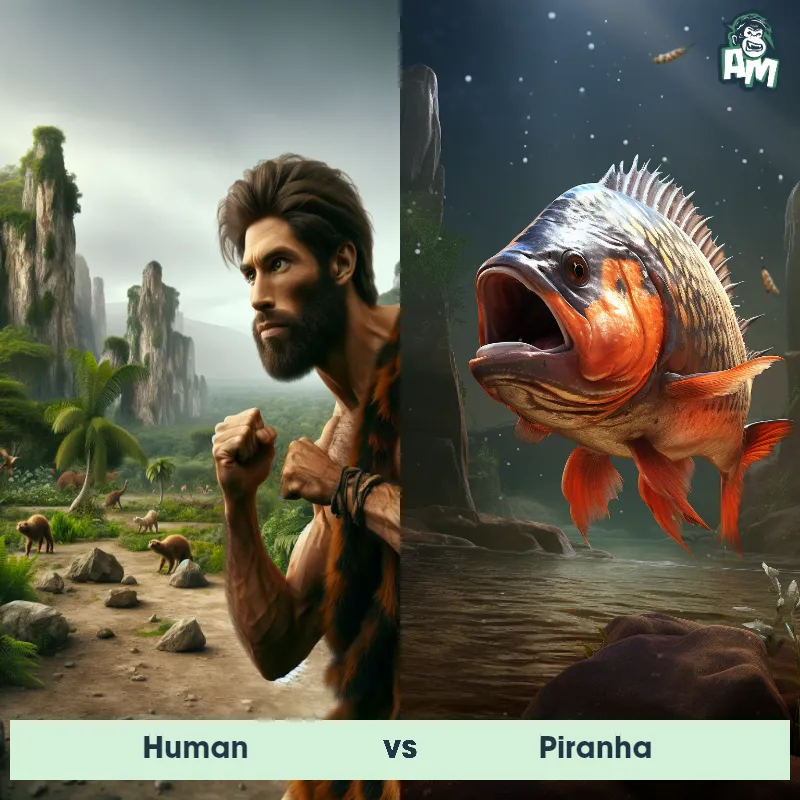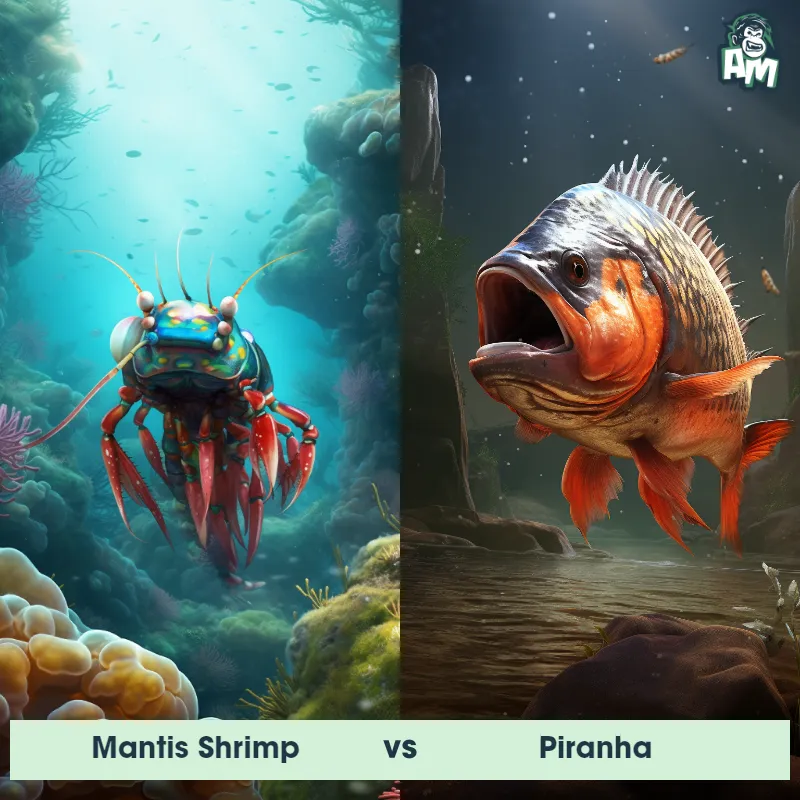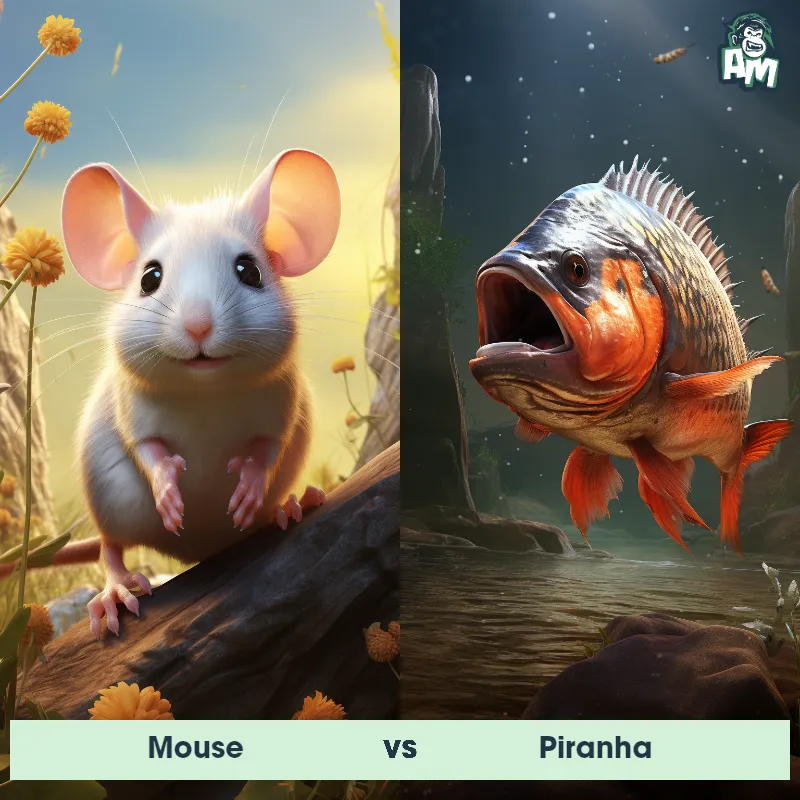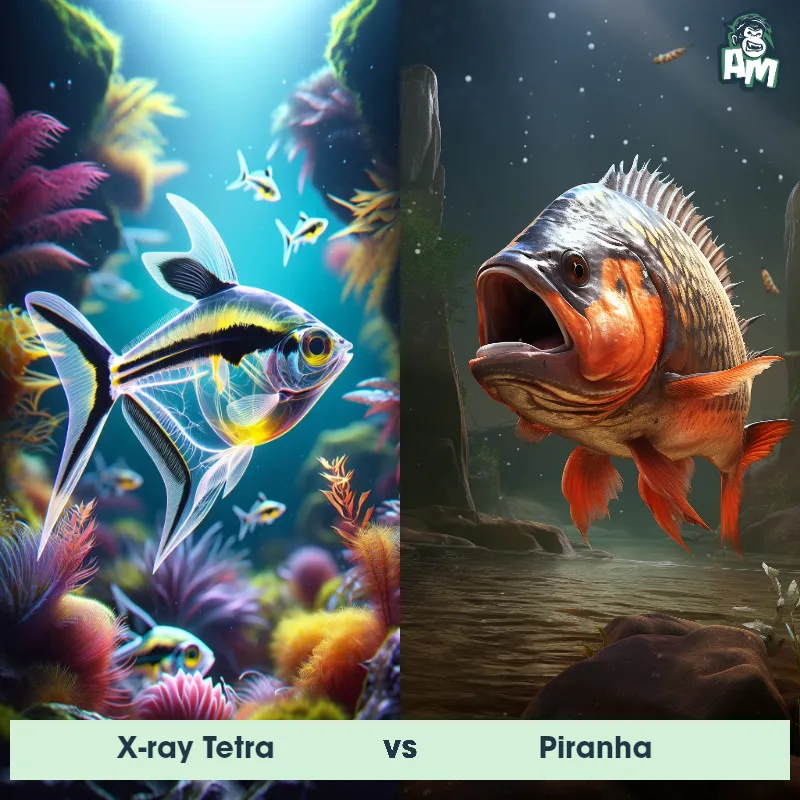The Piranha
The Piranha, often referred to as "the wolves of the water," is a carnivorous freshwater fish native to South American rivers. These formidable predators are known for their razor-sharp teeth and powerful jaws, which they use to tear apart their prey with remarkable precision. Typically measuring between 6 to 8 inches in length, Piranhas have slender bodies with compressed sides, allowing them to swiftly cut through the water. They exhibit various shades of silver or grey, blending in with their surroundings to ambush unsuspecting prey. With their acute senses, Piranhas are social creatures, often found living in schools of up to hundreds or even thousands of individuals.
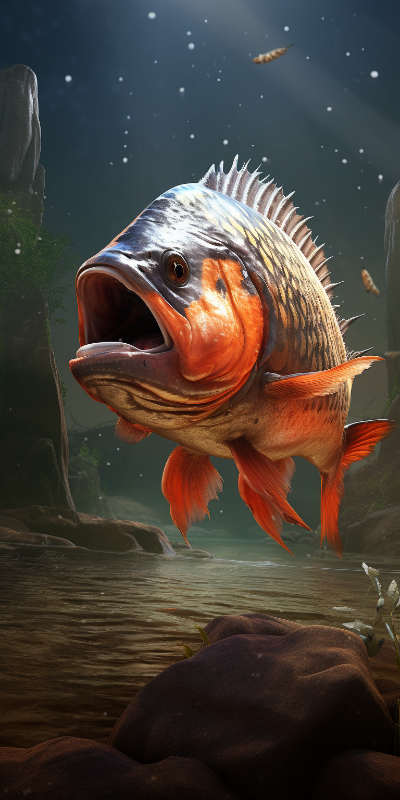
| Piranha | |
|---|---|
| Size | 5 to 20 inches (12.7 to 50.8 cm) |
| Weight | Up to 7.7 lbs (3.5 kg) |
| Speed | 55mph (88.5km/h) |
| Key Strength | Sharp, triangular teeth and strong jaws |
| Biggest Weakness | Often scavengers, not aggressive predators |
| Scientific Name | Pygocentrus nattereri |
| Family | Characidae |
| Habitat | Freshwater rivers and lakes |
| Geography | South America |
| Diet | Fish, insects, seeds, fruits, and sometimes larger prey |
| Lifespan | 5 years - 15 years |

The Piranha
The Piranha, often referred to as "the wolves of the water," is a carnivorous freshwater fish native to South American rivers. These formidable predators are known for their razor-sharp teeth and powerful jaws, which they use to tear apart their prey with remarkable precision. Typically measuring between 6 to 8 inches in length, Piranhas have slender bodies with compressed sides, allowing them to swiftly cut through the water. They exhibit various shades of silver or grey, blending in with their surroundings to ambush unsuspecting prey. With their acute senses, Piranhas are social creatures, often found living in schools of up to hundreds or even thousands of individuals.
Fun Fact: Piranhas have been known to communicate with each other through low-frequency sounds or drumming, creating a unique form of underwater communication.
| Piranha | |
|---|---|
| Size | 5 to 20 inches (12.7 to 50.8 cm) |
| Weight | Up to 7.7 lbs (3.5 kg) |
| Speed | 55mph (88.5km/h) |
| Key Strength | Sharp, triangular teeth and strong jaws |
| Biggest Weakness | Often scavengers, not aggressive predators |
| Scientific Name | Pygocentrus nattereri |
| Family | Characidae |
| Habitat | Freshwater rivers and lakes |
| Geography | South America |
| Diet | Fish, insects, seeds, fruits, and sometimes larger prey |
| Lifespan | 5 years - 15 years |
Match Highlights
Piranha Matchups
We use AI to simulate matchups between the Piranha and other animals. Our simulation considers size, strength, and natural predatory behaviors to determine the most likely outcome.
Piranha: Diet, Predators, Aggression, and Defensive Behaviors
What do Piranhas eat?
Piranhas are omnivorous fish that primarily feed on other fish, insects, crustaceans, and even larger prey such as birds or mammals. They have sharp teeth that are capable of tearing through flesh, making them efficient hunters in the water.
Do Piranhas have any predators?
While Piranhas are considered apex predators in their ecosystems, they do have a few natural predators, including river dolphins, caimans, and larger fish species such as catfish and river sharks. However, these predators typically target younger or weaker Piranhas rather than healthy adults.
Are Piranhas aggressive?
Piranhas are known for their aggressive feeding behavior, especially when in large groups. They have a reputation for being ferocious and swift attackers, although they are not inherently aggressive towards humans unless provoked or in a feeding frenzy.
Do Piranhas fight amongst themselves?
Piranhas are highly territorial fish and will defend their feeding and breeding areas from other individuals. In some cases, Piranhas may engage in intra-species aggression when competing for resources or mates, leading to fights over territory or dominance.
How do Piranhas defend themselves?
Piranhas rely on their sharp teeth, strong jaws, and schooling behavior as their main defense mechanisms. When threatened, they may form tight shoals to appear larger and intimidate predators, or they may employ swift, coordinated attacks to ward off threats.
What is the biggest weakness of Piranhas in a fight?
The biggest weakness of Piranhas in a fight is their vulnerable sides and undersides, where they have softer flesh and are more susceptible to attacks. Predators that can target these areas effectively, such as river dolphins or caimans, have a higher chance of overpowering and preying on Piranhas in combat.
Fun Fact: Despite their fierce reputation, Piranhas are not mindless man-eaters, and attacks on humans are relatively rare. They usually feed on smaller fish, insects, and even fruits that fall into the water.
Fun Fact: Piranhas have sharp, serrated teeth that grow continuously throughout their lives, enabling them to remain efficient predators even as their teeth wear down due to constant use.



